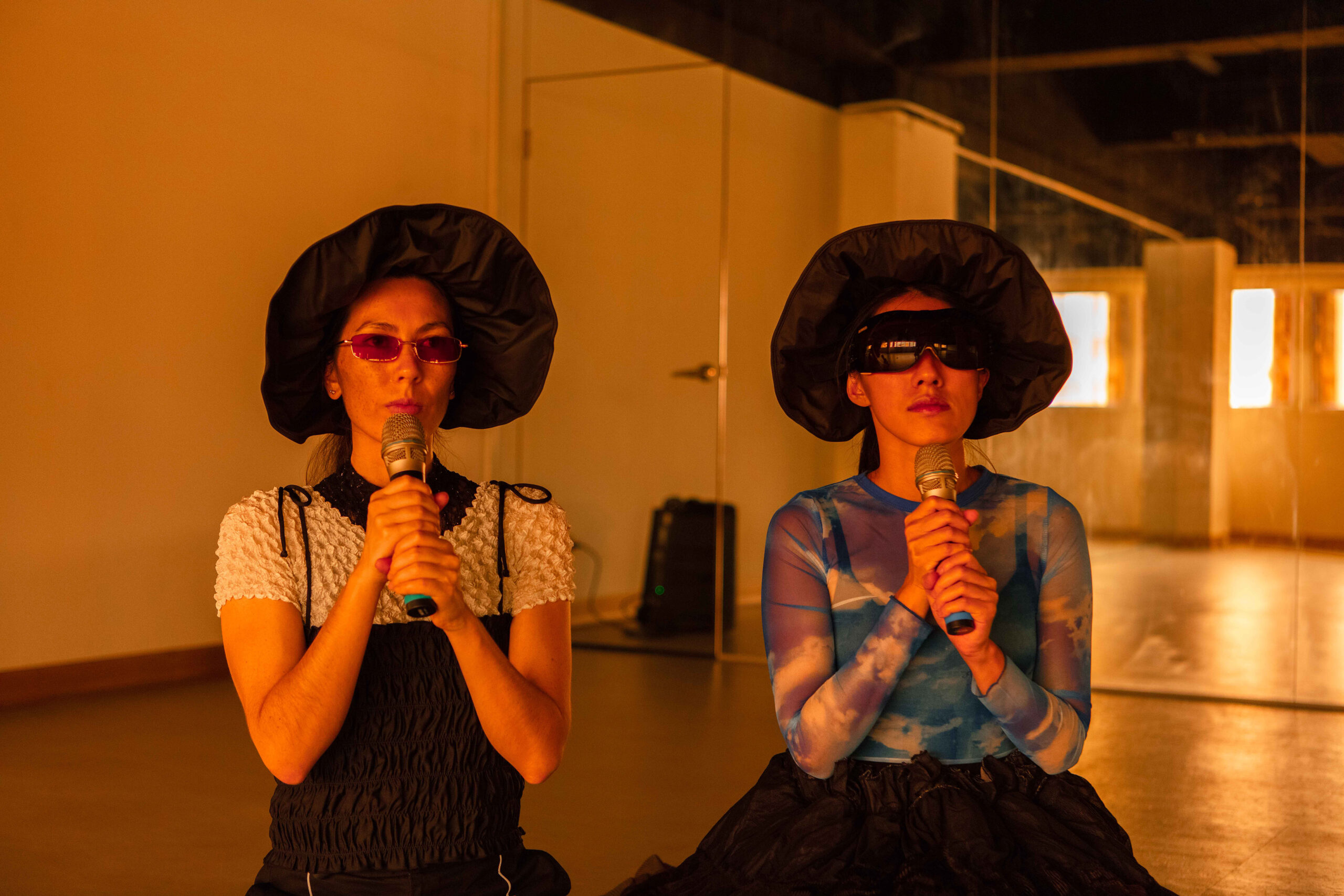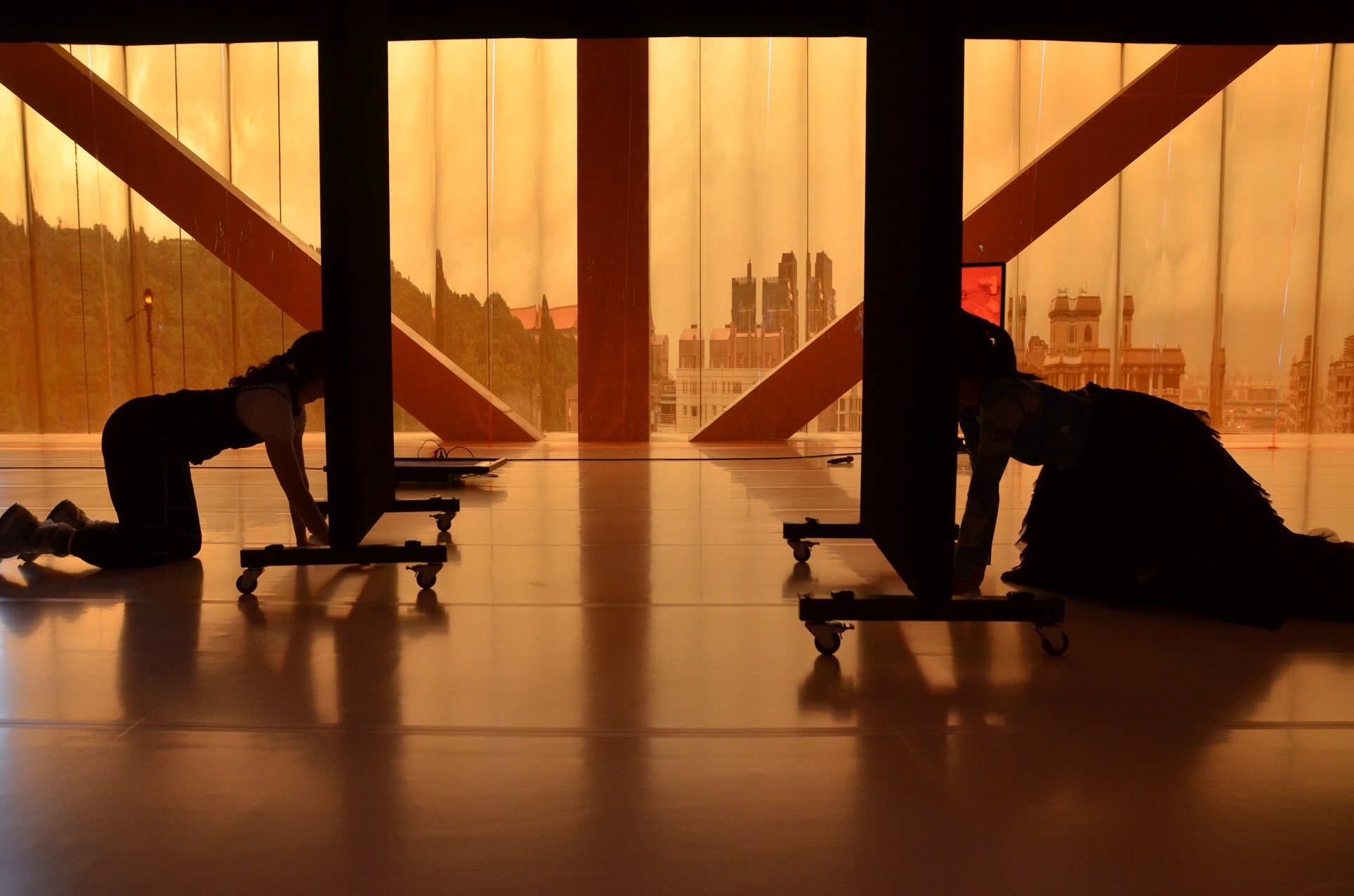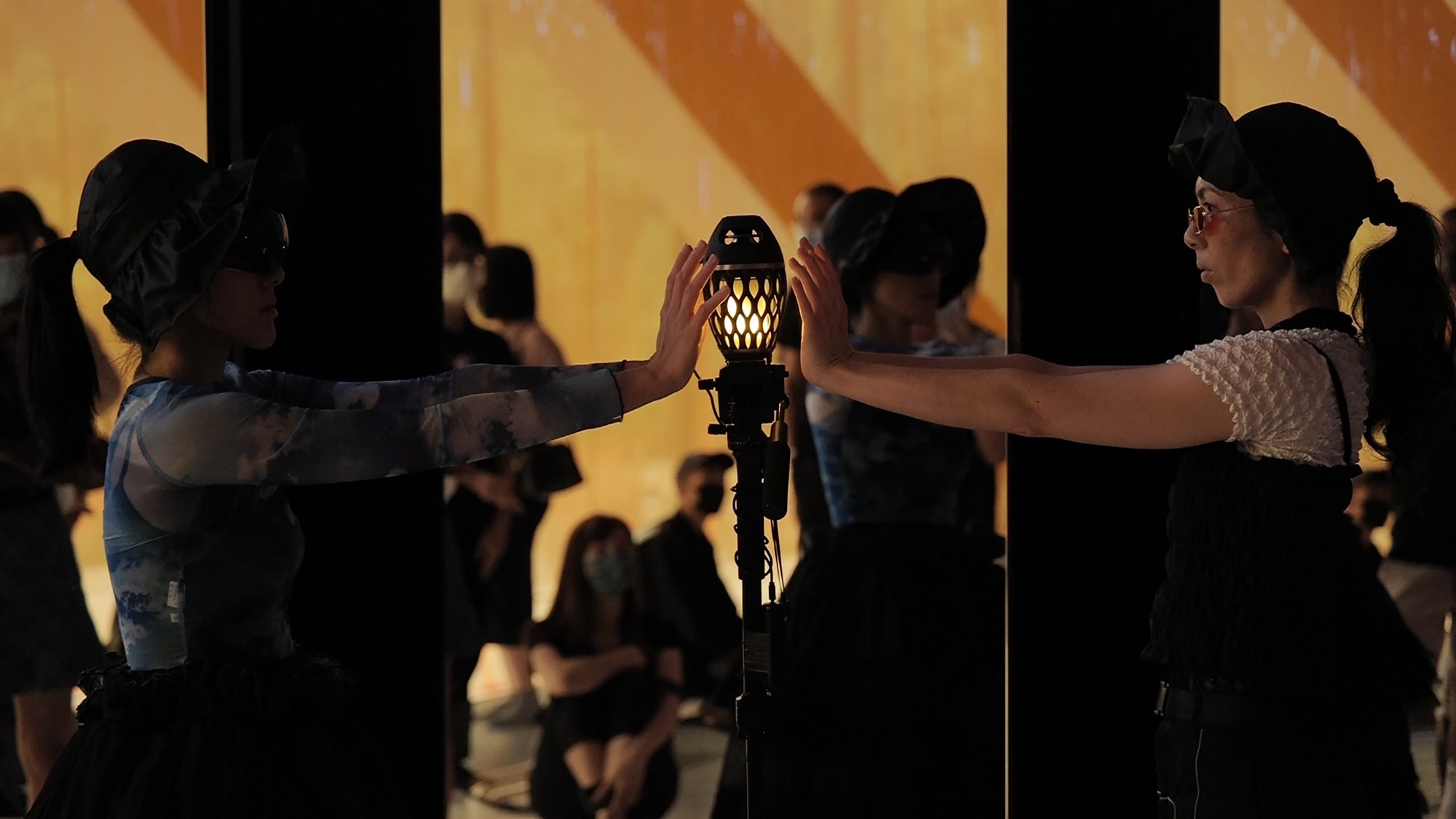
Paeonia Drive
Su Yu-Hsin and Angela Goh
Paeonia Drive is an interdisciplinary and ongoing project by Angela Goh and Su Yu-Hsin, bringing together performance, video installation, and dance. Speculating ways of living and moving in the age of digital anxiety, techno-culture, and image production, the artists explore the metaphor of gardens with historical, infrastructural, and symbolic aspects to embody the performance.
Life with contemporary digital machines produces everyday encounters of doubling, splitting, and reverberating as new aspects of our bodily experiences. In a garden where organisations of bodies, nature, and power meet and integrate with one another:
Who is watching the threshold of this garden?
We cannot hide outside of view when the outside is already on the inside.
Reality is disappearing and reappearing in confusing ways.
Between blurred borders of nature, artificiality, beauty and horror, the artists occupy and produce relations of differentiation and integration between the corporeal and the informatic, allowing converging and diverging series of machine-body events to begin to map themselves out.
This collaboration between Sydney-based dancer and choreographer Angela Goh and Taiwanese artist and filmmaker Su Yu-Hsin speaks at scales alternately intimate, social, and planetary, zooming in and out on the hazy horizon of the future.
Read Artist Statement
Paeonia Drive’s central point of reference is “The Garden”. Historically, gardens have always been constructed and created with points of view and perspectives in mind—traditional Chinese gardens are made to be viewed from within, to simulate being in nature; traditional Japanese gardens are made to be viewed from the house looking out, acting as an interface between the domestic and natural worlds; French Baroque gardens are constructed around a centralised axis of symmetry across flattened planes to draw perspective outwards towards the horizon, giving the impression of size, wealth, power, and territory. Gardens have their own infrastructures—walls, hedges, pathways, stepping stones—which direct and funnel the bodies that encounter them. Movement becomes inscribed and landscaped. These infrastructures also describe a central function of the garden – to enclose outside space, to mark boundaries, to create territories.
“Gardener’s Vision” is a term describing how the gardener kills weeds not because of what they are but because of what the garden ought to be. This mirrors the problematics we see in machine driven algorithms that operate without empathy, and replicate preexisting biases.
In Paeonia Drive, “the garden” is a metaphor for the organisation and control of nature, bodies, and power, explored through forces of colonialism, automation, and surveillance. Paeonia Drive utilises these historical, infrastructural, and symbolic aspects of “the garden” as research nodes to explore contemporary technocultural anxieties, and as methods of image production. The body is doubled, mirrored, split, and simulation is used as a strategy to make the body expansive, as a way to resist and disrupt the very forces that try to control and territorialise it.
Read Artist Statement
Paeonia Drive’s central point of reference is “The Garden”. Historically, gardens have always been constructed and created with points of view and perspectives in mind—traditional Chinese gardens are made to be viewed from within, to simulate being in nature; traditional Japanese gardens are made to be viewed from the house looking out, acting as an interface between the domestic and natural worlds; French Baroque gardens are constructed around a centralised axis of symmetry across flattened planes to draw perspective outwards towards the horizon, giving the impression of size, wealth, power, and territory. Gardens have their own infrastructures—walls, hedges, pathways, stepping stones—which direct and funnel the bodies that encounter them. Movement becomes inscribed and landscaped. These infrastructures also describe a central function of the garden – to enclose outside space, to mark boundaries, to create territories.
“Gardener’s Vision” is a term describing how the gardener kills weeds not because of what they are but because of what the garden ought to be. This mirrors the problematics we see in machine driven algorithms that operate without empathy, and replicate preexisting biases.
In Paeonia Drive, “the garden” is a metaphor for the organisation and control of nature, bodies, and power, explored through forces of colonialism, automation, and surveillance. Paeonia Drive utilises these historical, infrastructural, and symbolic aspects of “the garden” as research nodes to explore contemporary technocultural anxieties, and as methods of image production. The body is doubled, mirrored, split, and simulation is used as a strategy to make the body expansive, as a way to resist and disrupt the very forces that try to control and territorialise it.


